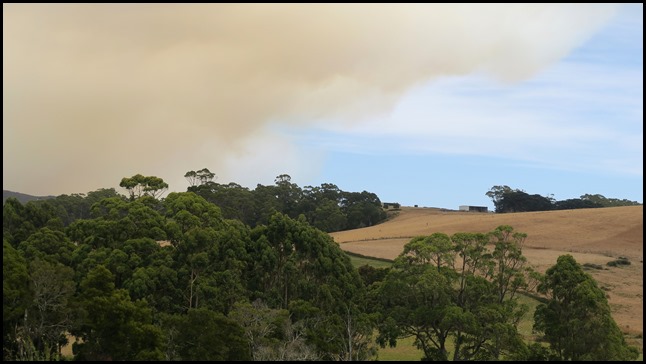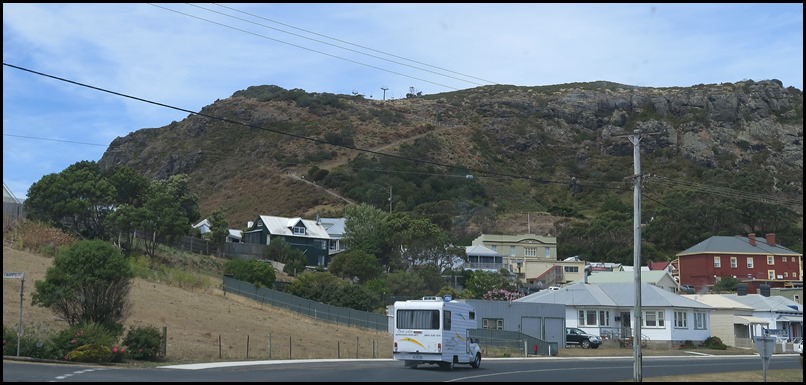To Stanley

|
To Stanley in
Mabel.......
   The best
bit about staying on a freedom camp is the perceived lie-in. Paid sites are very
fair with a departure time of ten but the time seems to race by from sevenish
with ablutions, breakfast, tidying up and the like. We could take our time this
morning plus, we only have a short journey. So guess what, Bear did eggs, yes,
we brought our egg cups with us...... and Bear had a rather
nice egg event. Seen from this way and that.
Not sure about the detritus on the bread as an
attractive sight.
 Plan:
Leave camp, pop into Penguin town, stop at lookouts, visit Table Cape Lighthouse
and get to the campsite in Stanley.
 St Stephens
Church on our way in and out of Penguin.
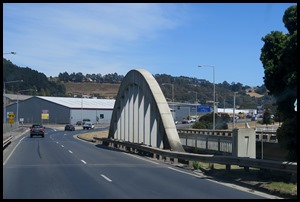   We crossed a
bridge in Falmouth and saw an enormous public
park with roses at the edge.
 The Cam
River.
 We loved Austins caravans, Bass Highway, Somerset because of their
animal trailer outside.
 Back on the coast.
 As we started climbing
toward Table Cape the bushfire smoke began to turn
the scenery a brown-orange.
 Heading toward Table
Cape Lookout we could only just make out the
lighthouse.
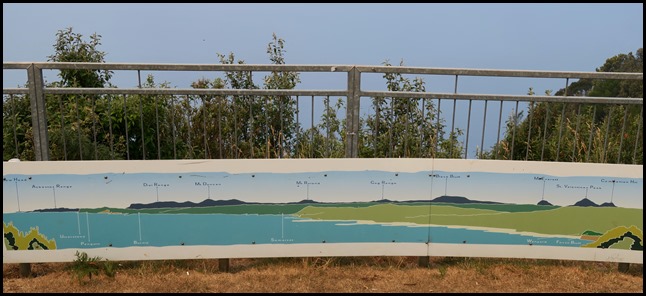 What we should have been able to see.
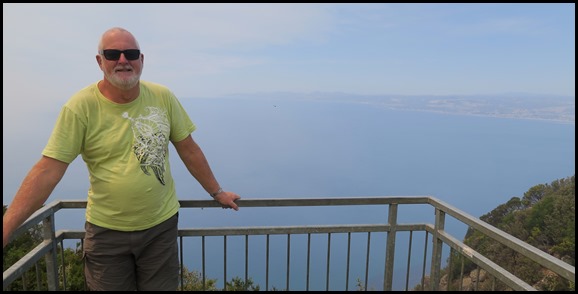 What we did
see.
   No
icons today..........
  Nothing for it but to
take a couple of pictures [sign and memorial] and
drive to the lighthouse, as smoke now stinging our eyes.
  We were surprised to see acres and
acres of poppy fields, extensive when
seen on the poppy map
Tasmanian Alkaloids is the largest opium poppy processing company in the Australian state of Tasmania. Approximately forty per cent of the world's legal opiate crop is grown in Tasmania. Tasmanian Alkaloids is a subsidiary of the United States pharmaceutical company Johnson & Johnson, but was formerly—as of 1980—a subsidiary of Abbott Laboratories. The company patented a poppy variety called "Norman" which was stated, in the 1999 Tasmanian Alkaloids Poppy Grower’s Bulletin to be the first variety lacking morphine and codeine, while still containing thebaine and oripavine. This variety went into commercial production in 1998. The company's processing plant is in Westbury, a town west of Launceston in the State’s north. The company is licensed by both the Australian federal and state governments to carry out its opiate processing work. Other major players are Turkey with 23% of morphine CPS, France with 21% morphine CPS and Spain with 4%. India, by contrast, produces traditional opium from which the US extracts opium alkaloids. India's morphine production is similar to Tasmania. Tasmania has an alkaloid yield of about 9.3 kg/ha compared with France at 7.0 kg/ha, Spain 4.9 kg/ha and Turkey at 1.1 kg/ha.
We had a wonderful tour of Table Cape Lighthouse, chatted to a local farmer and went on our way. Ten minutes later we saw a very strange sight. The deer in this field had cardinal lookouts and the rest of the herd were laying down. Further away all the others in the field were also laying down. The colouring could have been South Africa..............
Some apprentice one careful owners - way too light on rust and foliage. But we rarely see a Land Rover.
A lovely piece of machinery from Manchester and a great looking bus.
Farmland. Two in the afternoon, we are beginning to cough.
Eleven minutes past two and it’s as if someone has put the light on as we duck out from the bushfire smoke into clear skies.
On the horizon we see Stanley Nut, six miles to go.
The Sydney Morning Herald of the 8th of February 2004 reported: Stanley is the last major township on the north-west coast of Tasmania. Located 22 km from Smithton, 127 km from Devonport and 231 km from Launceston, it is a classified historic town full of beautifully preserved buildings. As you approach Stanley you see The Nut rising like a strange box above the bay. There is a plaque at the lookout on the southern side of Sawyer Bay. It reads: 'The Nut, discovered by Bass and Flinders in 1798, rises abruptly 143 m from the sea to a flattish top. The geological survey of Tasmania has confirmed that The Nut is the stump of an old volcano. The original core was built of fragments mainly volcanic rock ejected by explosive eruptions. Molten basaltic lava welled up the feeder pipe and in places intruded into these fragmental rocks and formed a lava lake in the crater where it solidified. As it cooled the basalt became weakly magnetised in the direction of the local magnetic field of that time. The direction and dip of this fossil magnetisation is quite different from the present magnetic field and suggests that the volcano was active during some period between 25 and 70 million years ago. Weathering and erosion since has removed all the weak rocks which built the cone so that the hard basalt of the lava pool now stands up as a conspicuous landmark. If you modelled a cone and crater in sand and half-filled the crater with molten iron through a pipe from below then jetted the sand away with a hose you would get the picture.' Stanley is the main fishing port on the north west coast of Tasmania. It was named after Lord Stanley, the British Secretary of State for the Colonies in the 1840’s. The first European to see 'The Nut' was Matthew Flinders who in 1798 recorded that he had seen a 'cliffy round lump resembling a Christmas cake'. The history of Stanley is the history of the Van Diemen's Land Company. In 1825 the Van Diemen's Land Company formed in England was granted the rights by Royal Charter to a huge tract of unsettled land to raise fine wool sheep on a large scale. Circular Head, commonly known as 'The Nut', was chosen as the centre of operations. Stud livestock, implements, craftsmen and indentured labourers from England along with convicts assigned locally were landed nearby in October 1826. Despite directions to the contrary, the Aboriginal occupants of the area were at times badly treated by company agents resulting in large numbers of murders and their eventual disappearance. Under Edward Curr as chief agent the company explored, surveyed and developed the northwest. It was from Stanley that the foundations of centres such as Burnie (named after a company director) were laid. Distances were so great, and transport so slow, that if Curr wanted to change some standard procedure he was lucky if he got approval in under eight months given that the company was based in London. The company's development of the town was relatively slow. While the port was opened in 1827, the town wasn't surveyed until the mid-1840’s and the first school wasn't opened until 1841. In 1880 the first coach service between Stanley and Burnie was established. It took 6-7 hours to make the journey. Today Stanley has become a popular tourist destination. It has large numbers of craft shops, tea houses, potteries and galleries - most of which are housed in the numerous local historic houses.
Stanley attracts more than 100,000 visitors a year, many drawn to The Nut....... that’s for tomorrow then after a lie-in. Sounds like a plan.
As we drive in I see the steep zig-zag track up to the Nut. Perhaps we’ll go up in the chairlift and walk down.
We pull into the campsite and see just what we would expect to see...............
ALL IN ALL WONDERFUL TO EXPLORE THE NORTH COAST NICE TO REACH FRESH AIR AFTER ALL THE SMOKE |







